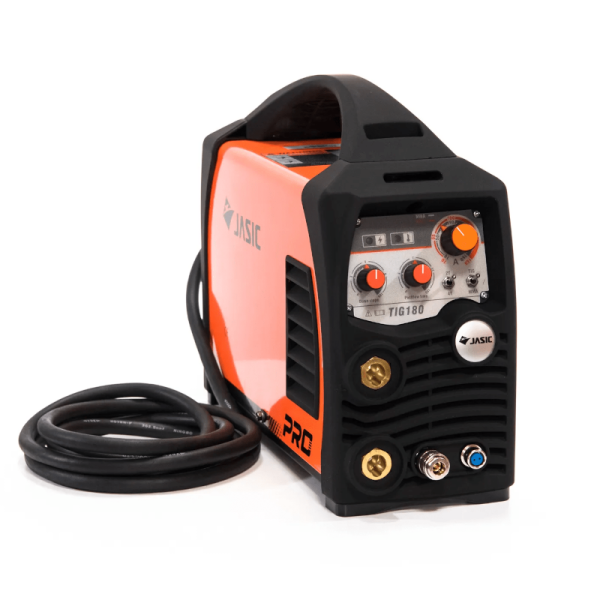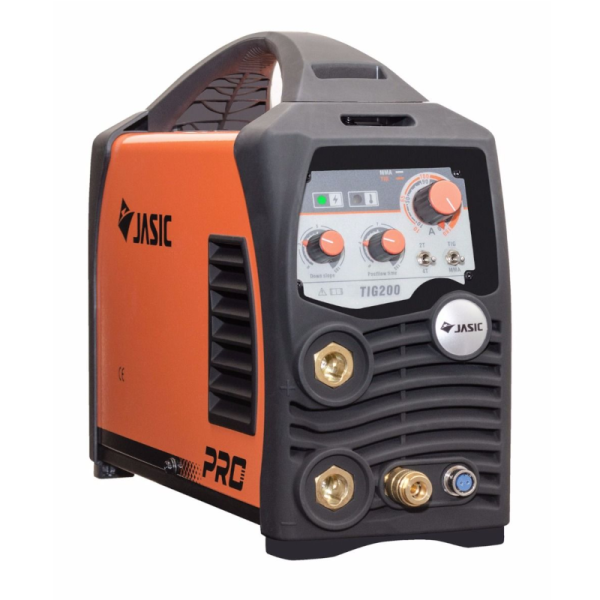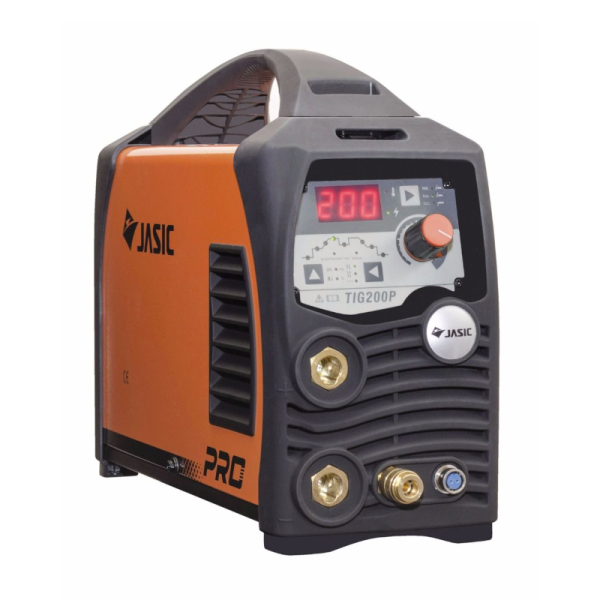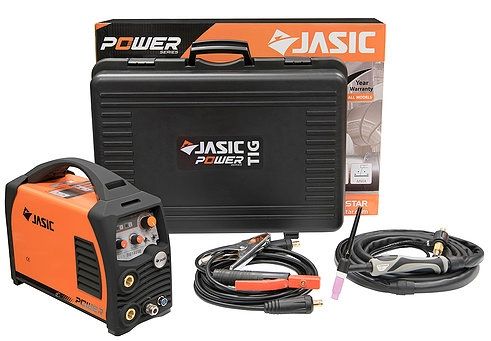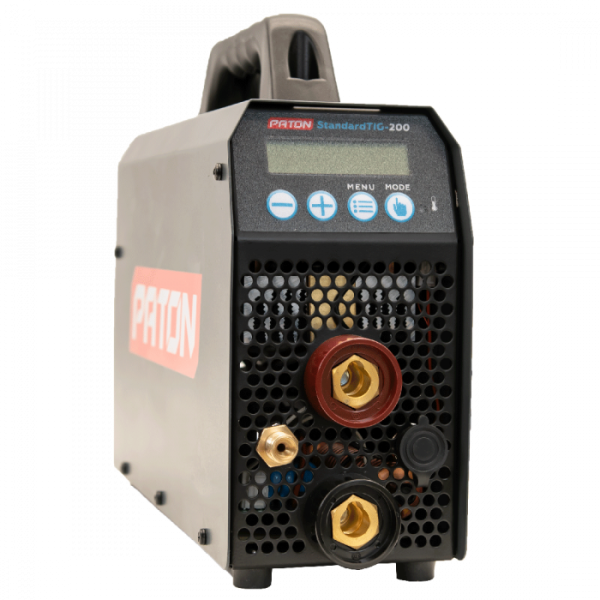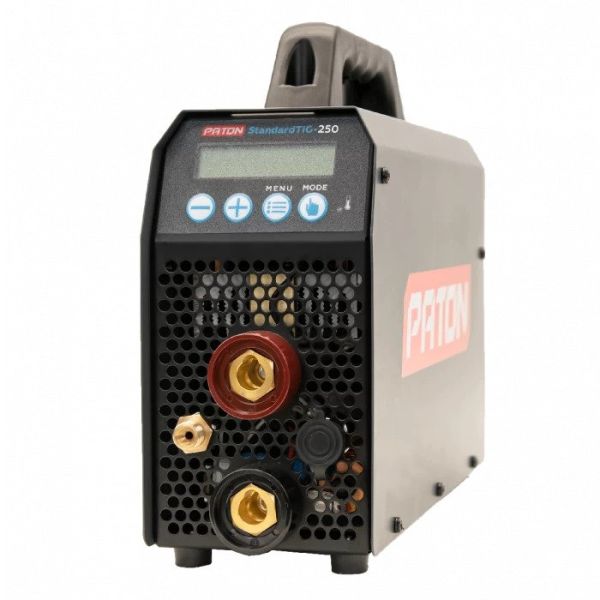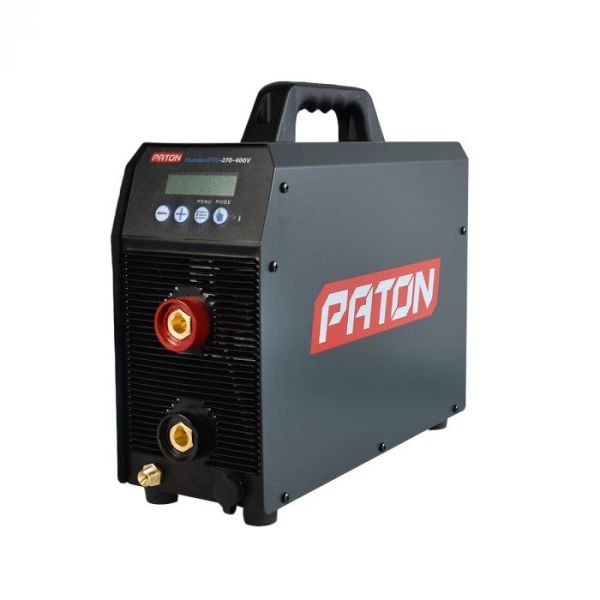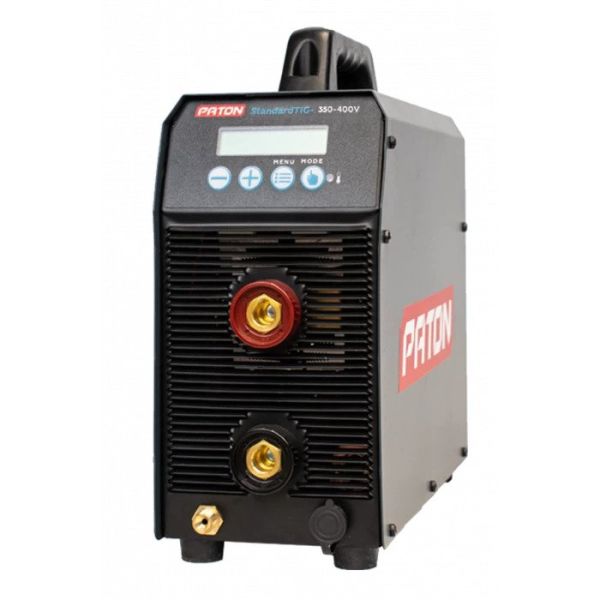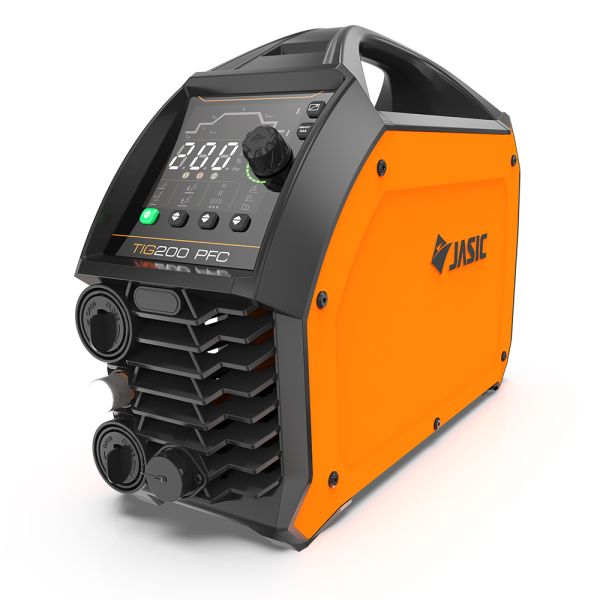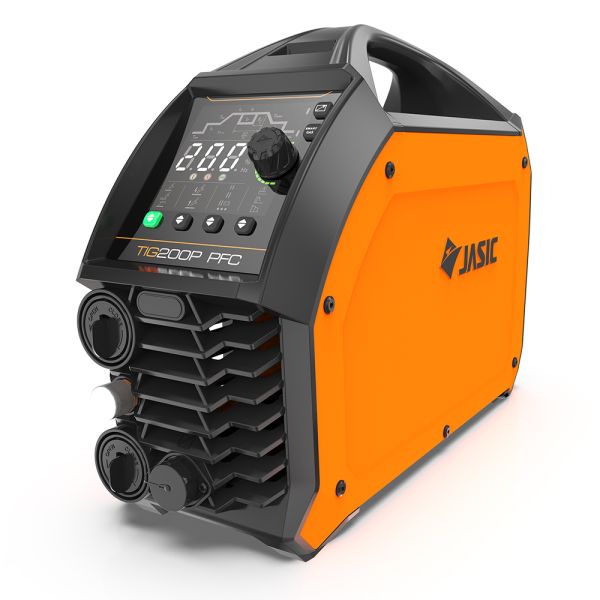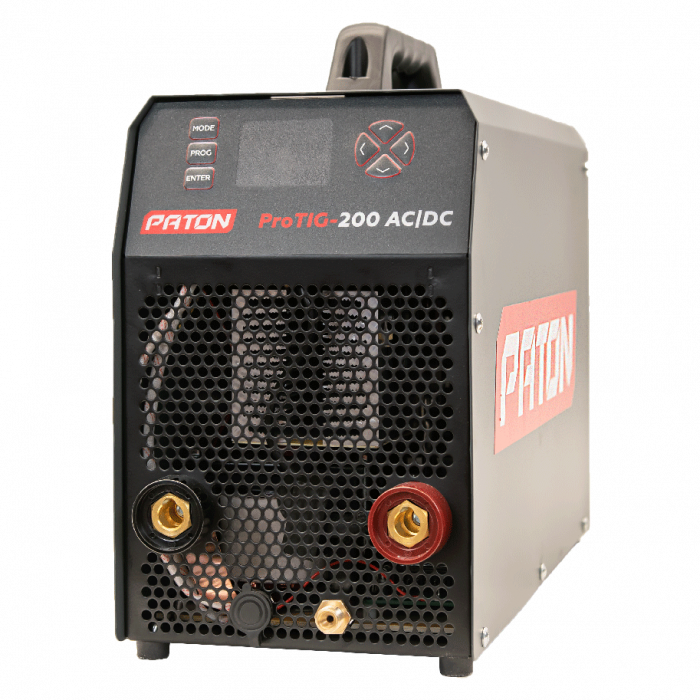TIG Welders
TIG Welders for DIY & Industrial Use
TIG stands for Tungsten Inert Gas. This is because a tungsten electrode combined with an inert shielding gas (argon) is used for this welding method. TIG welders are used in industry for precise welding.
A tungsten electrode is used to strike an arc that allows welding of all materials. You can use a TIG welding machine to weld mild steel, stainless steel & aluminium. Aluminium TIG welding requires an AC welding output that can only be found on an AC DC TIG welder.
This type of welder is usually more expensive than a standard DC only TIG welding machine. However, if you plan on welding aluminium it is always best to plan ahead and buy an AC DC TIG welder. TIG welding is also known as Gas Tungsten Arc Welding and is known as the "cleanest" welding process.
Welding Supplies Direct are the sole UK distributor for Paton TIG Welders.
The flagship model for the UK is the PROTIG 200 AC/DC.
This machine has been compared to high end, industry leading brands. This applies in terms of build quality and arc quality, especially on AC output. It also has incredibly useful features that are perfect utilised in practically all welding applications.
How to choose a TIG Welder
- Determine which material you would like to weld
- Decide what the maximum thickness material you would like to weld is
- Determine a maximum budget to spend
- Contact our sales team and provide them with this information
- We can then advise the most suitable machine for you!
Are you looking for a TIG Welder to weld mild steel, stainless steel or aluminium? Welding Supplies Direct offer a wide range of TIG welders, both DC and AC/DC TIG welding machines. Choose from an array of brands at the best online prices. Our brands include Oxford, GYS and Stealth - All stocked and ready for immediate, next day delivery.
We also offer, MIG Welders, Arc Welders, TIG welding gas & TIG welding accessories.
Frequently asked questions about TIG welders
How does a TIG welder work?
A TIG welding machine uses a tungsten electrode to initiate an electrical welding arc.
The tungsten electrode is held by a TIG torch using a combination of a collet, collet body & back cap. Collets & collet bodies are generally matched to the diameter of the tungsten electrode. For example, if using a 1.6MM diameter tungsten you would also require a 1.6MM diameter collet and collet body.
Once the torch has been fitted with all the necessary torch consumables the torch is then connected to the TIG welder. This is done by means on a dinse connector, amphenol plug and gas fitting. This allows for the welding current to be passed through the torch. This is in order to initiate the electrical arc at the end of the tungsten electrode.
The shielding gas will also pass through the TIG welding power source. It will then be fed through the tig torch in order to shield the weld from oxygen.
In order to start the welding arc the user would press the button on the TIG torch. This would then signal the TIG welder that the arc should be started.
The welding machine will utilise a high frequency ignition. This means the tungsten electrode would not need to touch the workpiece to start the arc. It will "bridge the gap" between the tungsten and the workpiece that is to be welded.
Once the arc has been ignited the user would move the welding arc along the weld seam. This would melt the two pieces of metal together. The user would then add filler wire to strengthen the joint between the two materials.
The filler wire would usually be matched to the material type being welded. For example, 316 grade stainless steel would be welded using 316 grade TIG filler wire.
TIG welding machines are available in two types of output. DC only or AC/DC. DC TIG welders are used for welding materials such as carbon steel and stainless steel. Utilising the AC function on an AC/DC TIG welding machine would allow the user to weld aluminium and other materials.
Oftentimes, a user welding aluminium will utilise a TIG welding footpedal. A footpedal works in a similar way to a pedal in a car.
When the user applies pressure to the pedal the amperage output from the machine will increase. When the user releases that pressure the amperage will decrease. This is particularly useful when welding aluminum.
Why? Because aluminium is prone to becoming heat soaked very quickly which can make controlling the weld very difficult. Backing off on the output current allows the welder to re-gain control of the weld. This ensures a smooth looking final result.
TIG Welding Machine Features
What is "pulse"?
Pulse TIG welding is when the machine constantly fluctuates the welding arc current. A TIG welder with a pulse feature allows the user to set the frequency of the pulse.
The pulse frequency is usually set in hertz (hz). This means the amount of time the pulse with vary per second. For example, if a user set the pulse setting to 50hz the machine will vary the output current 50 times per second.
In addition to setting the pulse frequency, the user must also set the pulse as a percentage of the main current. For example, if the users main current is 100 amps and the pulse is set at 50% then the machine will pulse between 100 amps and 50 amps, as 50 amps is 50% of the main current of 100 amps.
Pulse welding is used for two main reasons:
- It limits the heat input in to the material being welded, thus minimising heat distortion of the sheet. This is especially useful when welding thin sheet metal.
- Pulse welding typically allows for a more aesthetically pleasing weld result.
What is "upslope" & "downslope"?
Upslope and downslope features are utilised at the beginning and end of a weld run, respectively. Upslope allows the machine to "ramp up" to the main current from a pre-set base current.
The user can set a base current of 50 amps to allow himself time to establish his welding puddle comfortably. The upslope is then set in seconds. After that, the main current must also be set. The result would then be something like as follows:
- Base current set at 50 amps
- Upslope set to 5 seconds
- Main current set at 100 amps
- Once the welding arc starts the machine will "ramp up" from 50 to 100 amps over the span of 5 seconds
Downslope is the reverse of upslope, allowing the welder to ramp down from his main current to a finishing current. For example:
- Main current set at 100 amps
- Downslope set to 3 seconds
- Finishing current set at 20 amps
- Once the user clicks the TIG torch button to finish the weld run the machine will ramp down from 100 amps to 20 amps over the span of 3 seconds.
The main purpose of downslope is to eliminate craters at the end of the weld run as well as eliminating overheating of the final portion of the weld run.
What is "pre-flow" & "post-flow"?
Pre-flow is the amount of time the machine will allow the shielding gas to flow through the torch prior to initiating the welding arc; this is used to "flush out" any impurities in the gas line.
Post-flow is the amount of time the machine will allow the shielding gas to flow through the torch after the welding arc has finished. The user should hold the torch flowing shielding gas over the end of the weld run to prevent oxidation of the weld.
What is "duty cycle"?
Duty cycle is the amount of time out of a 10 minute period that a machine can run at a set output current. For example, a machine with a 35% duty cycle at 200 amps can run for 3 minutes & 30 seconds (continuously) before needing to shut down and cool itself down, utilising it's internal fan.
Oftentimes, users believe there is a fault with their machine when the welder shut's itself down to cool, however, once the machine has cooled itself down it is able to re-start itself without any troubles.
Duty cycle is often measured at a 40 degree Celsius ambient temperature, which is incredibly uncommon in the UK. Therefore, it can be looked at with a pinch of salt.
It is not recommended to run your welding machine at the top end of it's output current on a prolonged basis as this will put immense stress on the internal components. Of course, there are exceptions to this rule such as industrial machines which are designed to run at the top end of their output current with a 100% duty cycle.


